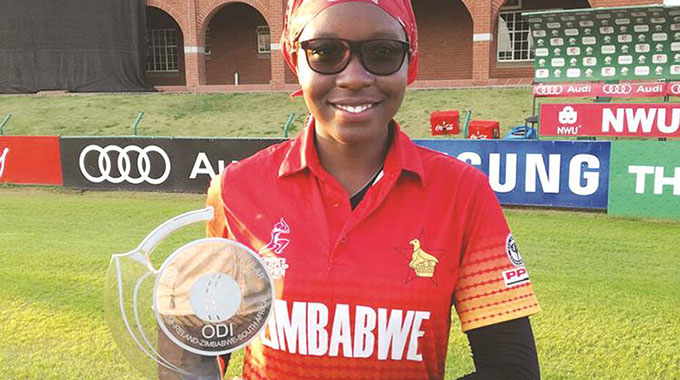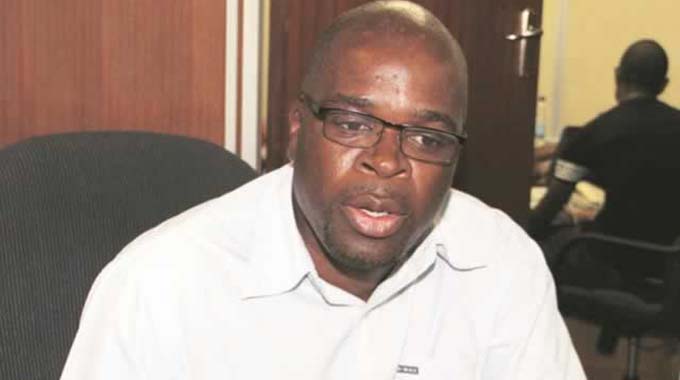Mothers Day reminds Lady Chevrons of their journey

Eddie Chikamhi Senior Sports Reporter
WHEN the world celebrates Mothers’ Day tomorrow, Mary-Anne Musonda, says it will provide a reminder of the progress the game has made since the Lady Chevrons made their international bow in 2006.
A lot of sacrifices have been made along the way and women cricket has been growing at a steady pace.
“It has not been the easiest of journeys,” the national team captain told The Herald on Saturday.
“But, it’s been a pleasure to represent the country since 2006. At some point I took a break to pursue some studies and I managed to come back and I am giving it my all.
“We are always fighting to put Zimbabwe on the global map and to qualify for the World Cup competitions consistently.
“Unfortunately, we have met some obstacles along the way, which sometimes were beyond our control. It’s sad we could not qualify for the World Cup but it’s something we are working on.”
Musonda was part of the pioneering team which travelled to Kenya for ICC regional World Cup qualifiers in December 2006.
The side had the likes Julia Chibhabha, Stacey Davis, Emily Jinjika, Sharne Mayers, Thandolwenkosi Mlilo, Siphatisiwe Moyo, Sinikiwe Mpofu, Pellagia Mujaji, Nonthlanthla Nyathi and Yvonne Rainsford.
Zimbabwe were still trying to find their feet on the international arena.
Back then, the game was predominantly in Harare and Bulawayo and, unfortunately not many established male clubs embraced women’s cricket and this hampered growth.
But the hard work and commitment was rewarded when the Lady Chevrons won the regional tournament in Kenya and qualified for their maiden World Cup.
They settled for fifth, out of eight teams at the 2008 finals, by defeating Scotland in a play-off.
However, at the 2011 World Cup Qualifier, Zimbabwe had much less success, failing to win a single match.
At the 2013 World Twenty20 Qualifier, the team placed sixth out of eight teams, while at the 2015 edition the team placed third, narrowly missing out on qualifying for the 2016 World Twenty20.
But, then, the women’s cricket was still largely amateur as they were not looked after like their male counterparts. They depended more on allowances.
“There were a couple of teams in those early days. We played provincial games and there was good competition,’’ said Musonda.
“It’s unfortunate not enough cricket is being played locally these days and that obviously affects competition.
“We had started club cricket last year but, because of the current (lockdown) situation, there is nothing we can do.
“But, I am happy with the recognition we are getting. Part of the (national) team is now contracted and that makes it a semi-professional sport.
“The girls are getting something to work with, these are people with families and responsibilities.’’
For the first time since 2018, women are also being offered central contracts, with some on earn-as-you-play contracts.
ZC chairman, Tavengwa Mukuhlani, said they were working to take the women’s game to dizzy heights.
“The financial structure had not been very inclusive for the women from the budgetary point of view,’’ he said.
“But, we are changing that because we are dealing with mothers and breadwinners.
“We are encouraging girls and women to take up the sport. We believe that they can just be as successful as the men. Women’s cricket is growing at a steady pace.”
ZC have been in an overdrive to grow the women’s game.
The association recently have embarked on an audacious programme aimed at developing women’s cricket after successfully hosting a coaching clinic for 60 girls at Queens Sports Club in Bulawayo.
The ICC are targeting having one million more girls playing cricket in the next year.
“We need to have more girls playing cricket at primary, secondary and all the way to tertiary levels.
“But, I must admit more still needs to be done. I can confess we are not very active in schools.
“That’s an area that needs visibility and we have to invest in that area probably by starting with the all-girls schools and then spread out from there.
“Despite some setbacks, faced along the way, the game has been growing at a steady pace and we envisage a brighter future with the establishment of strong club cricket, age group and provincial cricket competition.
“That is the plan,” said Mukuhlani.
Mukuhlani said they owe a lot to Takashinga for spearheading the introduction of the game in Zimbabwe.








Comments